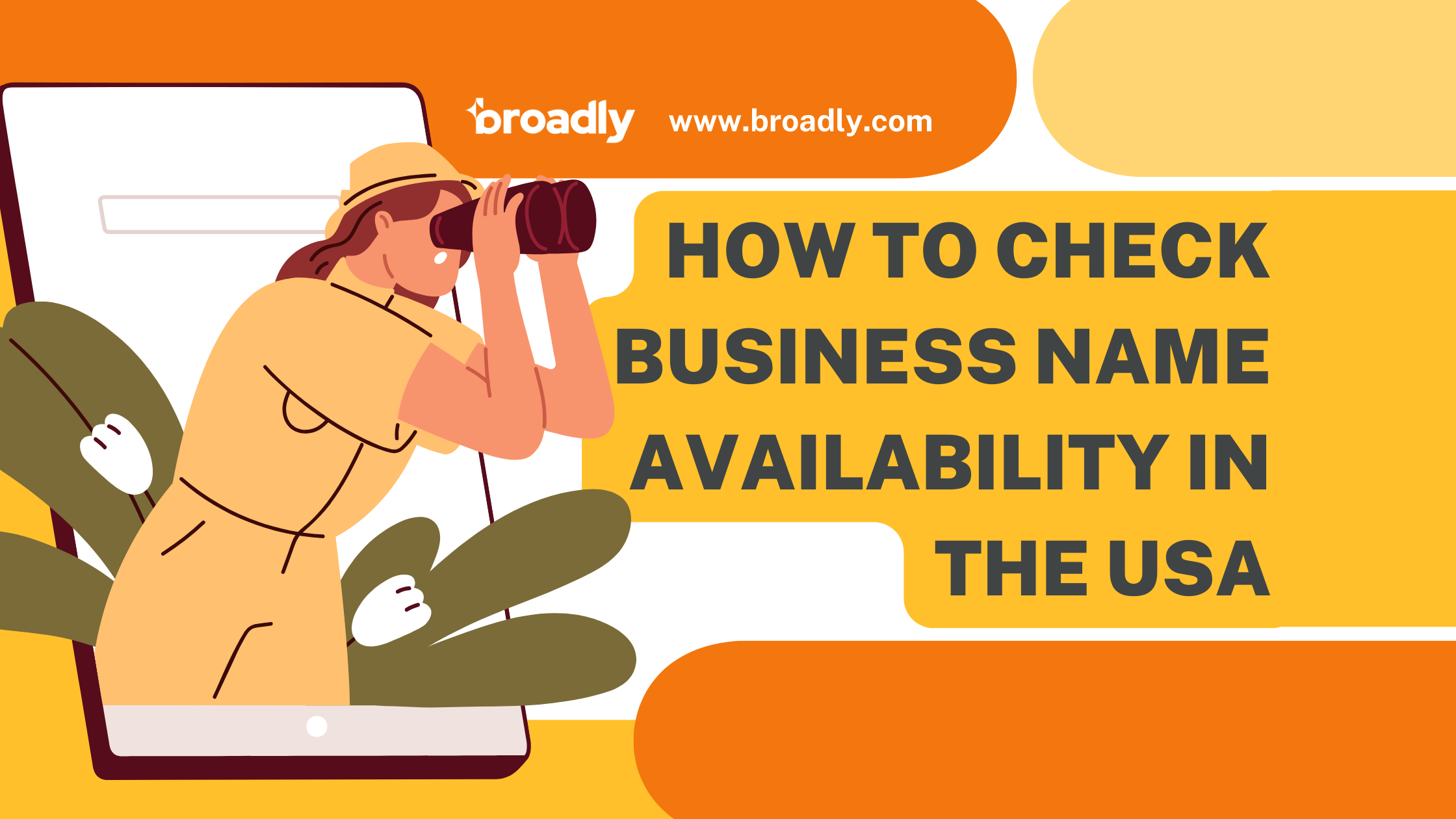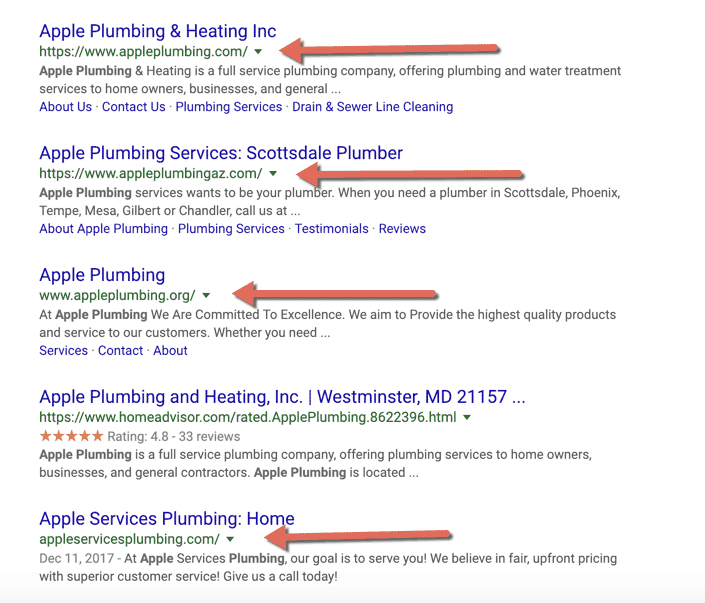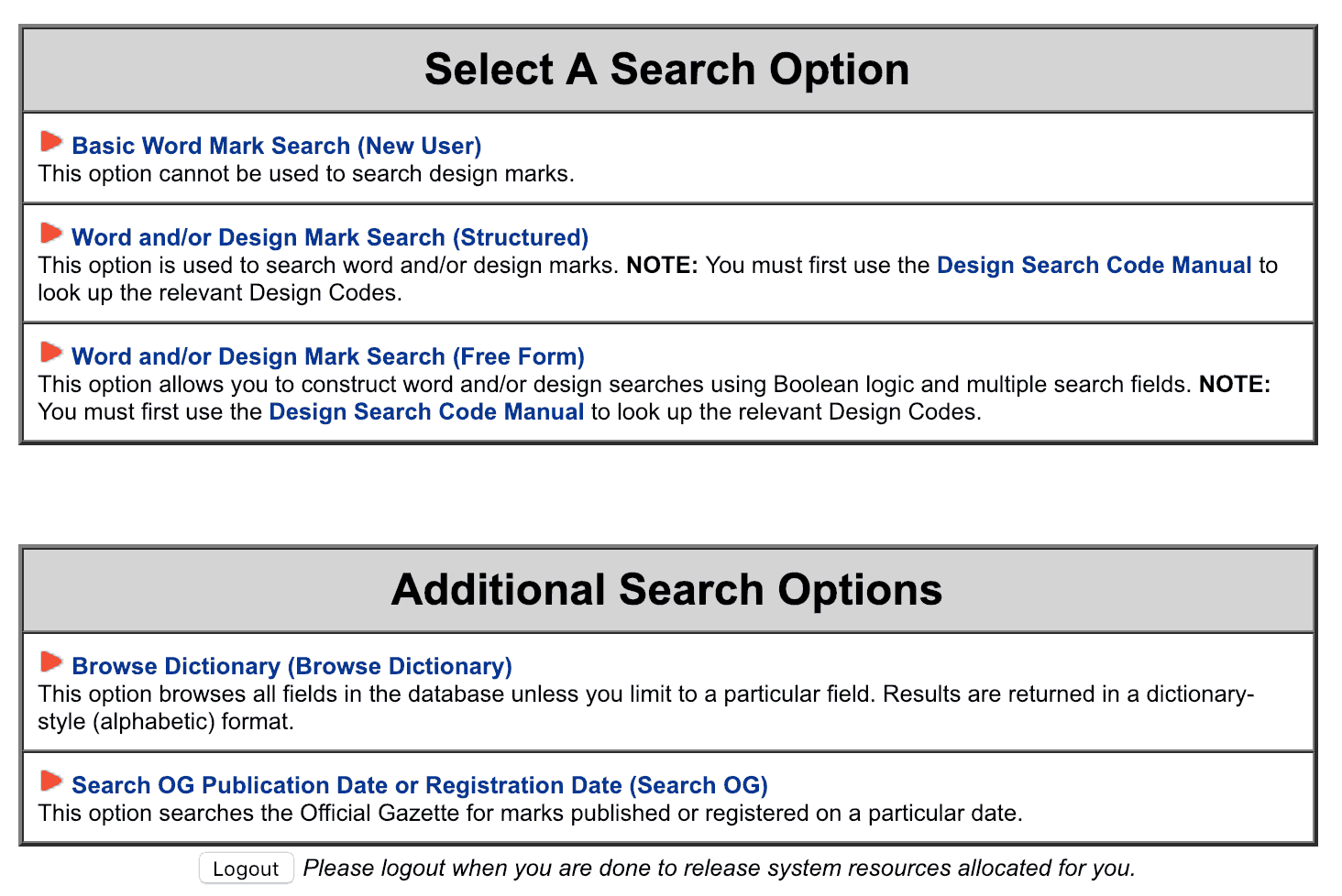
How to Check Business Name Availability in USA
Choosing a name for your business can be a daunting task but don’t worry, we’re here to help you find one! Doing your homework beforehand and checking to see if your business name has already been taken will save you some headaches in the future.
In this article, you will learn the steps to ensure your business name is not competing with anyone and how to get it registered. If you need some help coming up with a good name for your company we will show you how to pick a great name.
Once you have a name, Broadly can help you take the next steps by setting up a business website, software to manage your leads, and tools to monitor your online reputation and gain online reviews.
Free Guide: How To Set Up Your Google Business Profile
Why Is It Important to Check Business Name Availability?
It’s important to find a unique name since every year there are over 3,000 cases of trademark infringement lawsuits, which have cost US companies over $250 billion dollars. State law requires businesses to have unique names as well. Add to that the risk of copyright infringement, and the legality is reason enough.
Having a unique business name also helps showcase the uniqueness of your brand. The last thing you want is to have a business with a name that’s similar—or the exact same—as your own that has a bad reputation, as that can lead to customers confusing your businesses for each other.
Definitions of Business Types
Before we dive into the steps on how to find your business name, let’s define some of the terms that we will be discussing to avoid confusion.
- DBA refers to “Doing Business As” and is required to be filled out at a bank if you are setting up an account for your business. This type of business organization does not offer protection from organizations coming after your personal assets.
- Sole Proprietorship is where one person is the owner and there is no legal or financial distinction between owner and business.
- Limited Liability Company (LLC) or Corporation is a blend of corporations and partnerships with less regulation, and no one person is at risk for the business.
- Nonprofit Organizations are tax-exempt companies. All money earned is put right back into the company.
- Trademarks are words or symbols legally registered to represent a company or product. Think about the Nike “Swoosh” or McDonald’s “M” logo, which are both trademarks.
Best Practices for Choosing a Business Name
When choosing a business name, several best practices should guide your decision-making process. Incorporating these best practices into your business name selection can significantly contribute to your brand’s success and recognition.
Above all, make sure the name makes sense in relation to your goods or services so that clients can easily connect the dots. A great business name should be able to evoke emotion, resonate with your target audience, and elicit positive feelings or associations. It should be unique, setting your business apart from competitors and making it easily distinguishable in the market.
Opt for a name that is easy to say and spell, facilitating word-of-mouth referrals and online searches. Lastly, aim for a memorable name that sticks with customers, leaving a lasting impression and increasing brand recall.
Step 1: Check Your Favorite Search Engine and Social Media
The quickest and easiest way to check potential name availability is to simply go to your favorite search engine (like Google) and do an online business name search. You can check this name with a .com, or .org on the end to see if any business entity comes up or if there is a similar name out there that would be competing with your brand.
For example: You probably don’t want to call your business “Apple Plumbing” because, as you can see in the image below, there are literally dozens of plumbing companies with that name. Beware—even if your brand name looks available with an online search, you still need to do the remaining steps in this article. A competitor could be in the process of completing its unregistered business name. It’s better to find out now that your brand name isn’t available before paying money for a business name you can’t use.
In addition to using search engines like Google, it’s also a good idea to check sites like Yelp. A quick Yelp search can reveal if there are businesses with similar names in your industry or locality.
Also, don’t forget to check the availability of social media profiles for your business name—consistency across online platforms is needed for branding and marketing efforts. Ensure that your desired name is available or easily adaptable for use on social media platforms such as Facebook, Instagram, Twitter, and LinkedIn. This proactive approach ensures that your brand maintains a cohesive online presence and avoids any conflicts or limitations in establishing your digital footprint
Step 2: Check to See If the Name Has a Trademark
You should check the U.S. Patent and Trademark Office (USPTO) in case any trademark infringement rights are being violated. Getting pinged for intellectual property theft for your company name is a sure way to get shut down.
You will also want to do a trademark search to see if anyone is registered in the country for that same name. The Trademark Electronic Search System (TESS) provided by USPTO is a valuable tool for checking trademark registrations. Conducting a search on TESS ensures that your chosen business name does not infringe on existing trademark rights, protecting your business from potential legal issues related to intellectual property.
Additionally, checking ICANN’s domain name registration data lookup helps in securing a branded domain name. When using the ICANN lookup tool, you can verify the availability of domain names matching your business name.
Owning a branded domain name can establish your online identity and also enhance your brand recognition and credibility. Similarly, checking the availability of social media profile URLs (such as Facebook, Instagram, Twitter, and LinkedIn) ensures consistency and uniformity across digital platforms, strengthening your brand’s online presence and accessibility to customers.
After that, you are good to go!
Step 3: How to Check the LLC Registry
An LLC is a blend of companies and partnerships registered at the state level. Many LLCs do not have trademarks, so it’s important to check this online as well. To do so, visit your state’s secretary of state’s website and search for the name. For example, Florida’s Division of Corporations can easily be checked by name, with other search options if needed.
Step 4: Registering Your Business Name
Lucky you! Let’s get things registered!
It’s a good idea to patent and trademark your business name so no one can take your great ideas from you. Use the USPTO’s free trademark database to get yours registered. Simply go to http://www.uspto.gov/main/trademarks.htm and click “Search.” Then follow the instructions you see on the screen.
What to Do If Your Brand Name Is Taken
This can be a really frustrating experience if you have the perfect name that captures your product or service but someone else is already using it, but don’t stress! There are actually multiple things you can do.
Check out Brand Bucket where you can get check out brandable domains that are available for sale.
You can also check on some different websites, like GoDaddy.com or Namecheap, to see if there is a different variation of your name available. They can come up with some really great domain idea names and you will instantly know if they can be used as a company domain name.
Try to stick with a .com as it looks more professional, and most people assume that your website will have your name followed by the .com domain.
What Makes a Good Brand Name?
Choosing a brand name can really set you up for success. Here are a few things to remember when choosing a name for your company:
- The simpler, the better! Think about the computer brand “Apple,” a simple and easy-to-recognize brand name.
- A long name will be harder to remember. Entering a long domain name could be an obstacle for people who want to visit your website.
- Give them something to remember. Marketing is a tricky game—you need to make a quick impression before people move on.
- Having a difficult or unknown word as a domain could confuse customers.
- If you can create a domain that can impress people with cleverness, they will be more likely to remember and see what you are about!
- People might remember your brand, but if they can’t remember how to spell it, they might never end up on your website!
- Ensure the name is related to your services. Businesses with their core service or services in their business name have a much easier time ranking well on search engines like Google. If you’re a carpet cleaning company, consider a name like “Jeff Thompson Carpet Cleaning” instead of “Jeff’s Carpet.” If you’re a power washing company, consider a name like “Bluebird Power Washing” instead of “Bluebird Solutions.”
- Additionally, by including your core service in your business name, potential clients will know exactly what your main service is before they give you a call or visit your website.
Conclusion
Doing some homework before deciding on a brand name will save you a possible future headache. It’s worth the time and attention. Be particular with what you choose as a name because it can have a positive or negative impact on customers. Once chosen, make sure you protect your company name with patents and register your business with a trademark. The next steps are gaining leads and watching your business grow!
Transform your local business with revolutionary AI-powered software
This article was updated on April 11, 2024.



